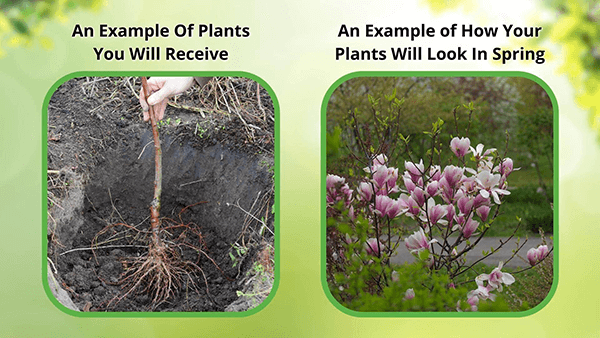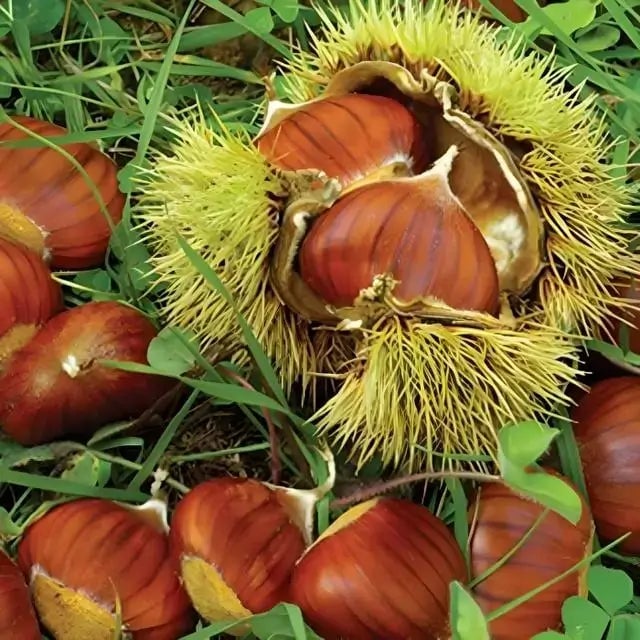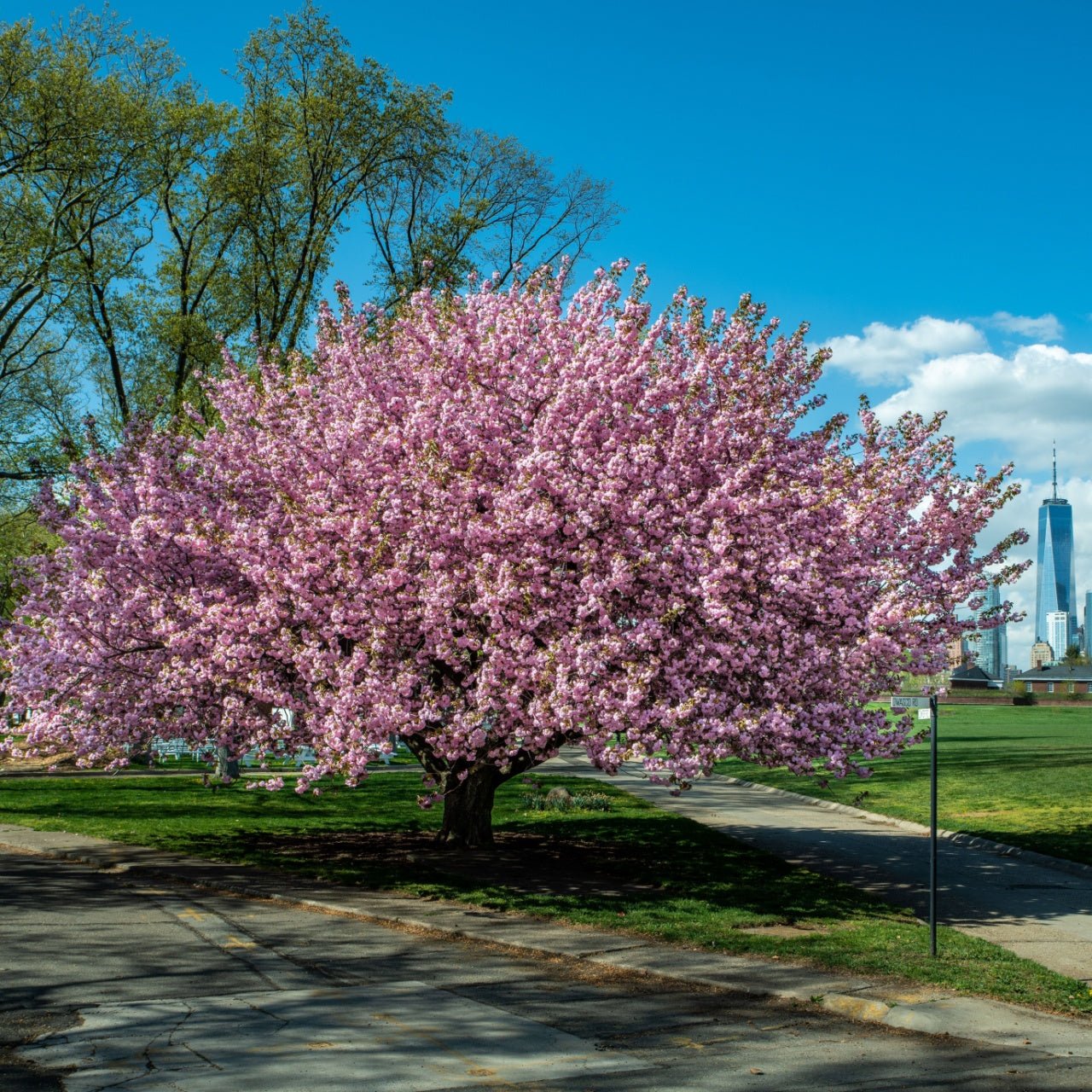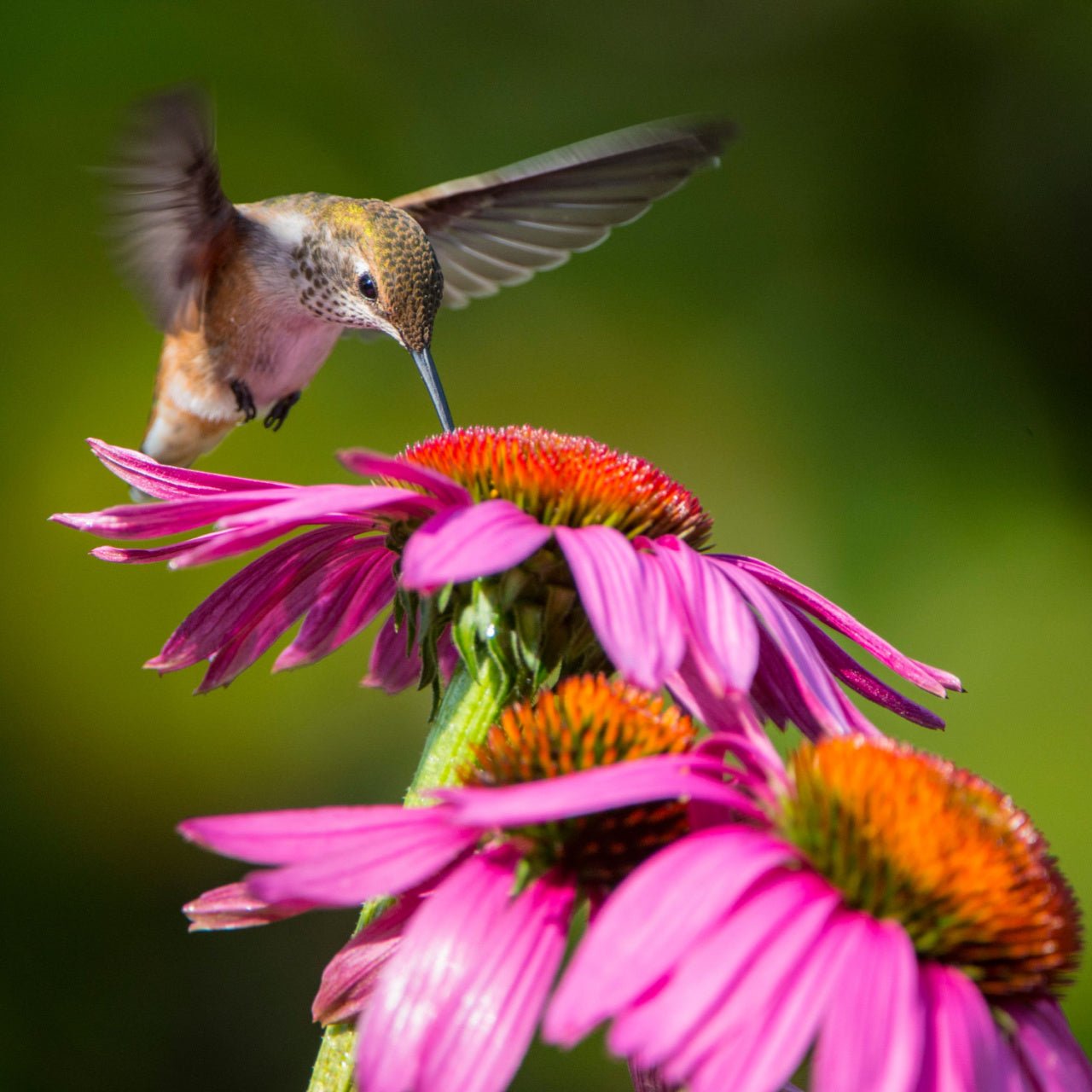



PQK Chestnut Trees
Beautiful fall foliage display
Wildlife attraction and support
Low maintenance and easy care
Thrives in
ZONE 4ZONE 5ZONE 6ZONE 7ZONE 8This plant ships:
November 20251 Year Guarantee on all plants
PQK Chestnut Trees - Castanea dentata ‘PQK’
PQK Chestnut Trees (Castanea dentata ‘PQK’) are excellent chestnut trees from the University of Missouri, hybridized from the Peach, Qing, and Kohr varieties. When you plant this tree, you can harvest the nuts, eat them fresh and roasted, and dry them to use throughout the year! Great for the environment, and great for your appetite!
Plant Details - PQK Chestnut Trees
Family: Fagaceae
Light Requirement: Full Sun
Water Needs: Moist
Height: 25 – 35 ft.
Spread: 20
– 25 ft.
Growth Rate: Fast
Bloom Time: Spring
Flower Color: White
Wildlife Value: Attracts bees, butterflies and birds
Landscape Uses and Maintenance - PQK Chestnut Trees
PQK Chestnut Trees are deciduous trees that has extraordinary wildlife value and landscape value. They produce sweet nuts at a much earlier maturity compared to other chestnut trees.
You can plant this tree to create a nuttery, as a shade tree, or in a native or woodland garden. Avoid planting this tree in high traffic areas where its nuts may be hazardous to passerby.
This tree will make a significant visual impact on your property, with its dark green leaves and ornamental white, feathery flowers that can be seen at a distance. This tree will reliably produce the chestnuts in burrs that are easily separated, with high yields.
Plant this tree in a location that has full sun and well draining soil. Avoid planting it in a location that has compacted or waterlogged soil where it will decline.
Make sure to water this tree until it is well established. Water it during periods of drought.
This tree will attract plenty of wildlife, including birds, small mammals, and butterflies that will eat its edible, sweet nuts from the ground. Make sure you get to the nuts first if you want to harvest them! Various pollinators are attracted to the flowers.
This tree is generally deer resistant once mature; however, you should be sure to protect it while it is young and vulnerable to browsing damage.
Noteworthy Characteristics
PQK Chestnut Trees are resistant to unexpected frosts, anthracnose, and blight.
This Is How Your Plants Will Look upon Delivery

Height at Maturity
Over 25 Feet
Care
PQK Chestnut tree thrive in well-drained soil and require regular watering during dry spells. They benefit from annual fertilization in early spring and should be pruned in winter to maintain their shape and remove dead wood. It's essential to watch for pests and diseases.
Plant Reproduction
PQK Chestnut tree spreads via nuts and animal dispersal.
Plant bare root trees during the dormant season in early spring or late fall (November through April). Dig the hole twice as wide as the roots so the soil is well-drained. Position the tree so the root flare is at or just above ground level. Fill the hole back with the soil you dug from and water. Maintain soil moisture, especially in the tree's early years, by providing deep, regular watering. Apply a 2-4 inch mulch away from the trunk at the base to retain moisture and suppress weeds. Prune trees during the first few seasons to establish strength and resilience, remove damaged branches, and continue maintenance pruning as the tree matures. Regularly inspect for pests and diseases and apply integrated pest management practices. Protect young trees from mechanical damage and extreme temperatures with tree guards, and stake them if necessary for support, removing the stakes after one or two years.
Shipping date depends on the date displayed and chosen when you order from the product's page.
We only accept returns on plants verified dead. If you think your plants have died, we offer a 1 year warranty, please use this File a Claim Link to verify dead plants and start with return warranty process.





.png?v=1722091206026&em-origin=cdn.accentuate.io&em-format=auto)
Elegant Appearance:
With its striking, large leaves and attractive growth habit, the Chinese Chestnut Tree adds a touch of sophistication to any garden. It’s perfect for enhancing your landscape with its graceful presence.
Versatile Growing Conditions:
This tree adapts well to different environments, from sandy soils to heavier clay, making it a flexible choice for diverse garden settings. It’s a reliable tree that grows well in many conditions.
Bountiful Nut Production:
The Chinese Chestnut Tree produces nutrient-rich chestnuts that are great for your health and can be used in a variety of recipes. It’s a productive tree that offers both flavor and nutrition.
Cool Shade Provider:
Offers significant shade with its expansive canopy, perfect for creating comfortable outdoor spaces. Enjoy a shaded retreat in your garden during hot summer days.
Caring Tips
How do I care for my PQK Chestnut Trees?
Each box contains detailed care instructions and information about your product. But here's the basics.
Care Tips
PQK Chestnut tree thrive in well-drained soil and require regular watering during dry spells. They benefit from annual fertilization in early spring and should be pruned in winter to maintain their shape and remove dead wood. It's essential to watch for pests and diseases.
Light Requirements
PQK Chestnut trees flourish in full sun, needing at least 6 to 8 hours of natural sunlight every day. It performs best in well-drained soil with ample sunlight to support its growth and nut production.
Hardy Planting Zones
4 • 5 • 6 • 7 • 8
Header
Use this content to share information about your store and products.
Frequently Asked Questions
How often should I water my plants?
How do I know if my plant is getting too much or too little sunlight?
What should I do to prepare my plants for winter?
What are the signs that my plant needs fertilizing?
How can I prevent pests from damaging my plants?
How do I choose the right plant for my climate zone?






